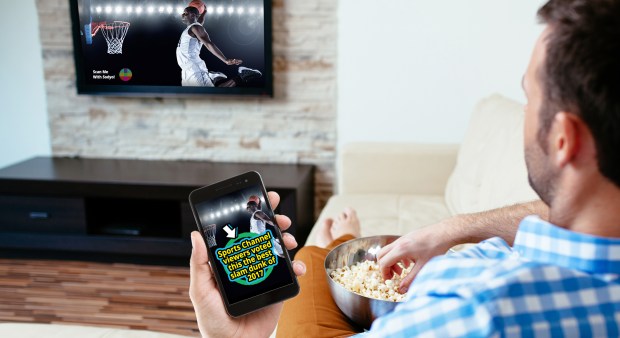Sodyo’s Vision For The Next-Gen QR Code

What if QR Codes could transition consumers seamlessly between the online and offline worlds, blurring the lines between physical and digital retail, and ingraining shopping as part of the everyday experience? They can’t, but the next generation of scannable codes aims to do exactly that, leveraging a color matrix that can be scanned from afar and renders well on TV screens.
Today, if a viewer sees, say, a commercial for baby clothes they would like to buy for their child, they would have to take out their phone or computer, navigate to the retailer’s website, and find the specific outfit. The time and friction inherent in this process creates a lot of opportunities for customers to abandon their shopping quest. Instead, imagine if customers could just point their phone at the TV screen while an ad is playing and arrive at a one-click shopping opportunity to purchase that desired item and get on with their day.
That’s the value proposition of these next-generation QR codes. If they catch on, the days of commerce as a stand-alone activity, divorced from media and ad consumption, could be a thing of the past.
Of course, first they’ll have to catch on.
Ron Yagur, COO & VP of Engineering at Sodyo, which is pioneering these codes, told PYMNTS how the technology works — what it does that a QR code can’t, and what it would take to scale the tech from its handful of client deployments today to a true QR code replacement.
How It Works
Just like a QR code, Yagur said that Sodyo’s color matrix code can be stamped on pretty much anything and scanned by any modern smartphone camera. That includes static media such as posters, subway ads and even billboards. Unlike a QR code, it includes more challenging visual backdrops, such as screens, which Yagur said makes the technology an ideal solution for advertisers to use in television commercials.
The challenge for QR codes, he said, is that scanning them means reading every little square within the matrix, which can only be done from so far away. In the broadcast channel, that means devouring a lot of real estate on the screen just to present a code that is large enough to scan from the user’s couch. Even then, Yagur added, factors like lighting and angle can make a huge difference. The illumination of the TV can have a significant effect on readability so, no matter how big the code is, some viewers will still not be able to scan it.
Yagur explained that Sodyo’s codes leverage color-based tagging technology so scanners don’t have to read the whole code — just the connection points between colors. That’s what makes it possible to scan them from afar, and it makes the scanning process go much faster.
Use Cases And Value
Yagur said several networks are considering Sodyo’s color codes as an add-on for their advertising to make ads more interactive and effective. Advertisers that opt in can start collecting data as if they were participating in an online channel: How many viewers are seeing the ad, how many are clicking or engaging, and how many are following through with a purchase? Those numbers can drive key strategic decisions for brands going forward.
Yagur said one U.S. home shopping network has plans to roll out the tech to augment or replace their 1-800 ordering number, as well as help viewers discover products related to whatever they’re viewing on the screen.
Commerce, however, is just the base use case, according to Yagur. Other networks are thinking broader: How could scanability increase audience engagement? That goes beyond commerce opportunities, he said. Scannable codes can direct viewers to additional content, polls and discussions around the show or sports game they’re watching.
Say someone is watching a reality TV program, like The Voice or The X Factor. Scanning could enable them to vote for their favorite talent or learn more about the participants. On the news, viewers could dig deeper on topics that interest them, and chime in with others who are discussing current events. When a commercial plays for a local car dealership, the consumer could scan to schedule a test drive.
Yagur said the value proposition boils down to three principles: Enrichment, engagement, and monetization. The main point is connecting the user to brands and bringing them to the storefront — something that television or digital signage alone can’t offer.
Scaling
Today, Sodyo works with just a handful of early adopters who are integrating the tech company’s software development kit (SDK) to enable scannable codes within their mobile apps.
To truly replace QR codes, however, these color codes would have to become mainstream enough that device developers choose to embed the ability to scan them into native camera applications, as they’ve already done with QR codes. That, Yagur says, is still a very long way off.
